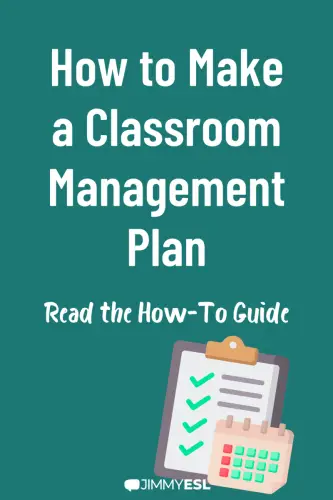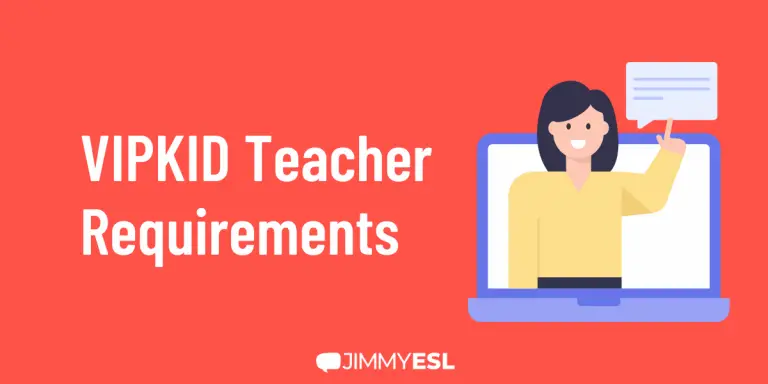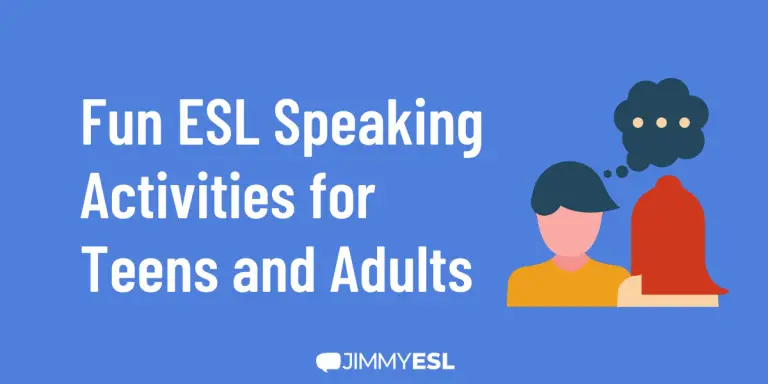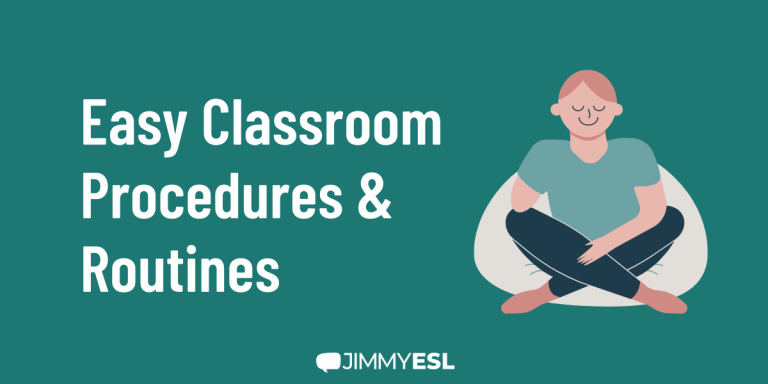How to Make a Classroom Management Plan (4 Easy Steps)
What do a teacher and a manager have in common?
The truth is, they’re more similar than you might think. In fact, all teachers are also managers.
To be an effective classroom manager, you need to develop a classroom management plan.
Do you need an MBA to make one?
Of course not! When you know what factors to consider, creating a classroom management plan is actually a pretty straightforward process.
Read on to find out how you can make a classroom management plan that really works in just 4 easy steps!
Why Teacher Have to Be Managers
A classroom, like an office, is a system of people trying to work together, and a teacher’s job is to organize and guide people in order to achieve goals — just like a manager does.
There are even studies comparing teachers and managers — wild, right?
If your classroom isn’t well managed it breaks down, devolving into chaos with no clear plan or direction.
A well-managed class, however, runs like a tight ship. Everyone knows what’s going on, they work together well, and they help each other and cooperate because there’s already a clear plan in place.
Let’s dive into what makes up a good management plan that suits your management style and class — no matter who you are or what kind of students you’re teaching.
The Basic Components of an Effective Classroom Management Plan
A good classroom management plan covers every single aspect of your class’s flow and structure. The plan includes preparation, execution, and process.
While that might sound like a lot, it’s fairly simple to create an effective, comprehensive classroom management plan. In fact, you can do it in four steps:
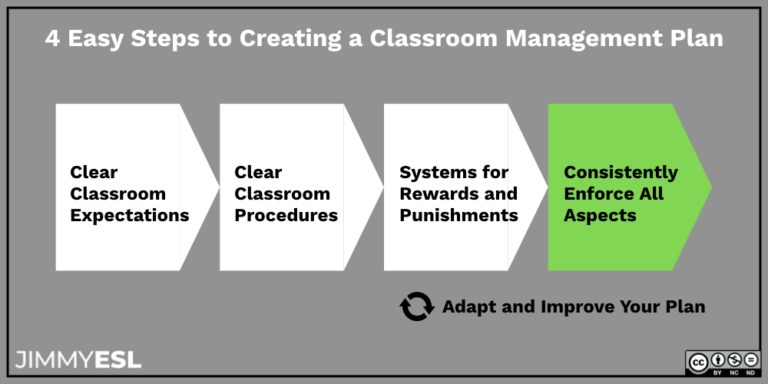
- Lay out clear classroom expectations
- Introduce clear classroom procedures
- Configure systems for rewards and punishments
- Consistently enforce all aspects of your classroom management system
These steps can be used in any classroom, for any age of students. Let’s go into what each piece of our classroom management plan really entails:
1. Lay Out Clear Classroom Expectations

Laying out classroom expectations is important because it gives students a clear outline of what they should be doing and how they should be behaving throughout the day.
Classroom expectations (rather than rules) create guidelines your students can refer to and abide by — think of them as a kind of code for how to act in the classroom.
Refer to our guide to creating and enforcing effective ESL classroom expectations for ideas of how to come up with and implement expectations that work!
2. Introduce Clear Classroom Procedures

Classroom procedures are basically routines and systems for carrying out tasks throughout the day.
Procedures are an essential part of your classroom management plan because they help your class go smoothly and give students concrete steps for each part of your day, from arriving in your classroom in the morning to getting ready for lunch to leaving at the end of the day.
Classroom procedures are what makes — or breaks — the flow of each day in your class.
Our introduction to creating effective classroom procedures will give you tips for implementing classroom procedures and routines that are sensible and easy to follow!
3. Rewards and Punishments

Rewards and punishments are, of course, a necessary part of maintaining your classroom management system, because they put grit and meaning behind your expectations and procedures.
Effective reward and punishment systems will incentivize and even excite students to behave in a way that benefits themselves and the class.
They also give students a good reason to refrain from disobeying the rules or causing trouble in your classroom.
Not all reward and punishment systems are created equal, however.
A good system is one that’s clear, simple, and meaningful — that means that students know how many points they have at any given time, that they know what does and doesn’t merit a reward or punishment, and that they know why they want points — what they’re all accumulating toward.
A good system is also one that emphasizes rewards rather than punishments and has rewards and punishments for the whole class — not just one student.
You can have more than one system in place to fulfill all these requirements.
For example, you can have a marble jar that you add one marble to when the class (or an individual student) is behaving well, and take a marble away from when students are misbehaving.
Set a prize for when students have accumulated a certain number of points.
Check out our guide to classroom rewards for some educational rewards for individual students and the whole class!
The important thing is that students aren’t just working for points — they’re working toward something, whether it be a field trip or the chance to be classroom monitor or 5 extra minutes at recess. And also, they’re working together!
4. Enforce All the Great Systems You Have in Place
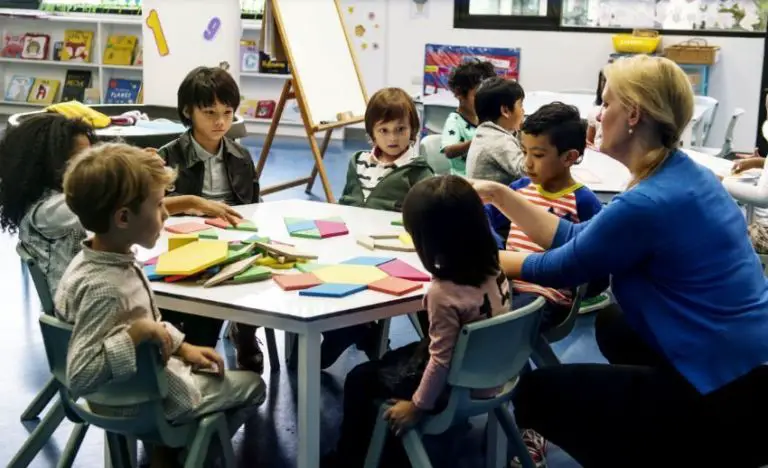
Consistent enforcement is the most important part of your management system because, without it, your whole classroom management plan breaks down.
If you want students to take you at your word and trust in your management system, you need to abide by it as well.
This means that you make sure to follow the classroom expectations and procedures you’ve set in place and that you check whether your students are doing the same.
It also means making sure that any co-teachers and other classroom staff are clear about your classroom management plan so that they can enforce rules in the same way you do, creating a coherent system no matter who’s in charge at a given moment.
Enforcing your classroom management plan also means, of course, that you need to be consistent in doling out rewards and punishments, and that you need to follow up warnings and promises with concrete results.
That means that if you’ve warned a student that you’ll send a letter home if they keep misbehaving that you actually send a letter home, even if you really don’t want to.
It also means that if you’ve promised your class a pizza party, you need to deliver one — even if there’s no time for one and you’re feeling totally overwhelmed.
If you don’t follow through on your promises, then the students stop trusting in all the components of your classroom management plan and the whole thing falls apart.
Changes and Exceptions
Now, you’re probably thinking that this sounds like a lot. No changes or exceptions, ever? Well, not completely.
Here’s a secret:
Your classroom management plan is almost definitely going to have components you’ll want to change.
And there will be times when you just can’t deliver the students what you’ve promised them — because one of your higher-ups changes their mind about something because there simply isn’t enough time, or because of a parent or co-teacher steps in.
Your classroom is a busy place with lots of moving parts, and sometimes things just come up.
You should, of course, try to limit inconsistencies as much as possible, but when they do arise, or when you realize you need to change something in your classroom management plan, the key is to not panic.
Instead, sit down with students and co-teachers and be transparent about what’s going on.
Even if you have young students, you can explain that you’re making a change to the rules or that something is not going to pan out, and explain why.
If you are teaching students whose mother tongue is not English, have a local teacher help explain if necessary, so students truly understand what’s going on.
You can use changes as a teaching moment to model good communication skills!
Apologize, let students know what’s going on, and make room for questions and clarifications.
By letting students in on what’s going on when you need to make changes, you let them into your process and keep your classroom management plan intact.
Just make sure to be consistent about the changes you’ve made, to note them down on whatever charts and teaching tools you use to maintain your classroom management plan, and to try your hardest to be fair and kind to students at all times.
This how-to guide is a great reference for when you need to change something mid-year.
If you have a 4-part classroom management plan and enforce it consistently, you are sure to have a cohesive, calm, and orderly class — well, most of the time, anyway.
